Find out how to do perfect scones! My recipe is easy to adapt with your preferred add-ins and always delivers butter-like, scaly, tasteful scones.
The best scones are butter -like, scaly and damp inside. They are crispy and crumbly around the edges, perfect for a cup of coffee or tea.
Scones can get a bad reputation because he is boring or dry (my husband Jack swores, he didn’t like her for years), but if you are well prepared, you shouldn’t be any of these things.
I share my favorite scone recipe below. With 10 basic ingredients it is easy to create and you can adapt it with your preferred sweet or hearty mix-ins. No matter which you choose, it always delivers delicate, tasty, baking scones.
If you are on the fence via Scones, I think this recipe convinces you. Even Jack will tell you that it is delicious for breakfast or brunch!
What are scones?
Similar to cookies, scones are slightly sweet baked goods with butter and/or cream and with baking powder. Here in the USA we often invite you with glazes and mixes such as fruit and chocolate chips. In Great Britain, scones tend to be easier, typically made without mix-ins and left unglazed. British scones are served as part of high tea and are the perfect vehicle for coverings such as jam and clotted cream.
This recipe is for American scones. Although they could make it for more British atmosphere without mixes, I think they have half as much fun here. I share some of my favorite taste variations later in this post!
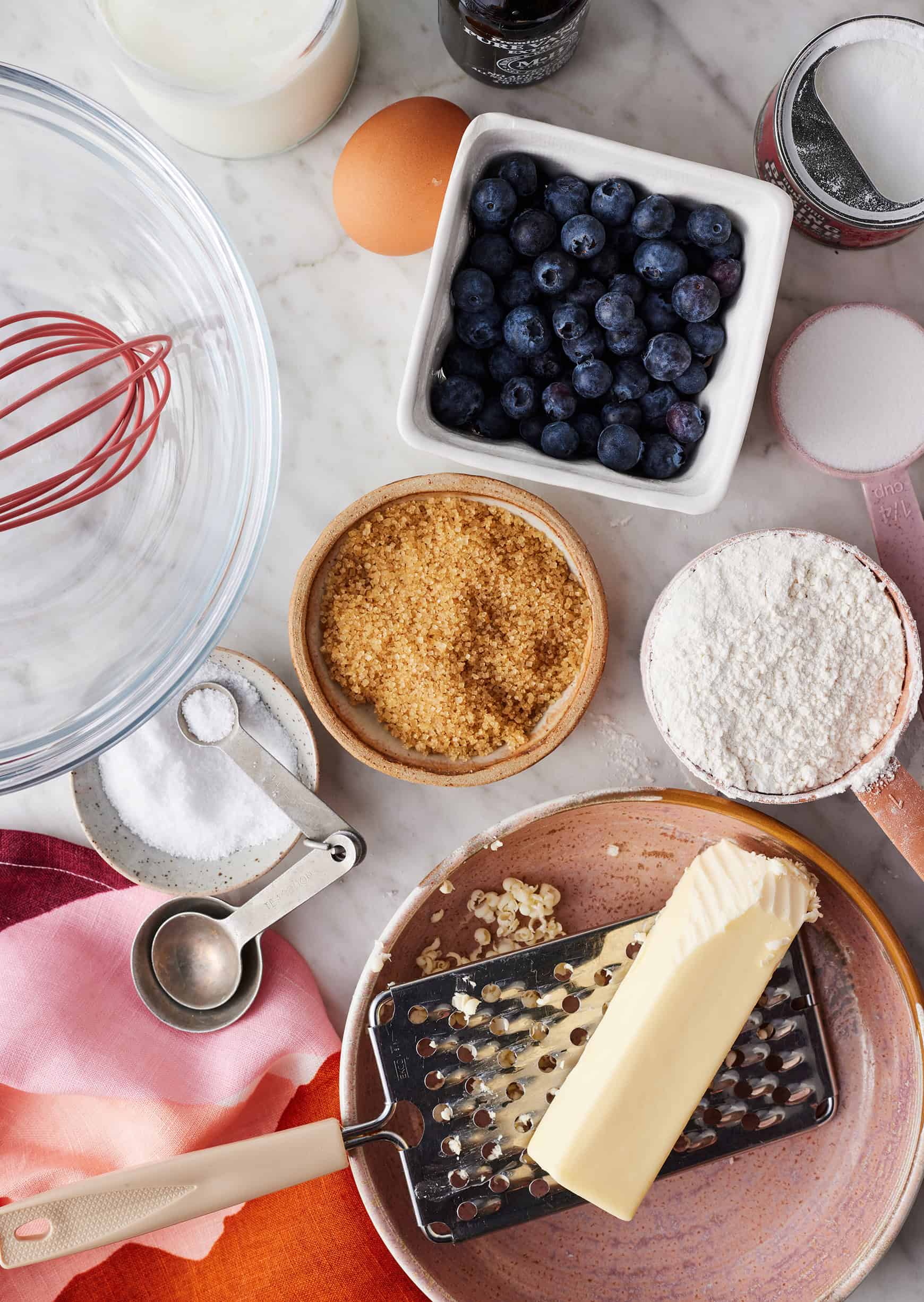
Basic -scone recipes
This basis -Scones recipe begins with 10 simple ingredients:
- Mix-ins your choice – Find some of my favorite taste variations below. The options include lemon blueberry, cranberry orange, chocolate chip and even Cheddar Herb!
- All -purpose flour – It creates the base of the dough. Spoon and expose it to avoid packing too much into your measuring cup.
- Cane – It makes these scones slightly sweet. I add sugar to the dough, regardless of whether I make sweet or hearty scones. When I go in the sweet direction, I also sprinkle Rough sugar On Sparkle and Crunch.
- baking powder – It helps the scones to blow up when baking.
- Unsalted butter – for wealth and butter aroma. I freeze the butter for 1 hour and then run it before I work in the Scone dough.
- Buttermilk – It gives the dough more wealth and moisture. If you don’t have buttermilk at hand, you will find alternatives in the callout below!
- An egg – It makes this scones tender and light.
- Vanilla – When I make sweet scones, I always add a splash of vanilla for warm taste. When I make hearty, I skip it.
- And sea salt – To bring all flavors to pop!
Find the full recipe with the following measurements.
Buttermilk alternatives
I love using buttermilk in scones. In addition to moisture, it adds rich, spicy aroma, and its acidity helps to rise the scones.
But if you don’t hold it at hand, that’s okay! Here are some alternatives:
- Whipped cream
- Full fat coconut milk
- A sparse 1/2 cup of milk mixed with 1/2 tablespoon of lemon juice. Set the mixture aside for 5 minutes to thicken before adding it to the dough.
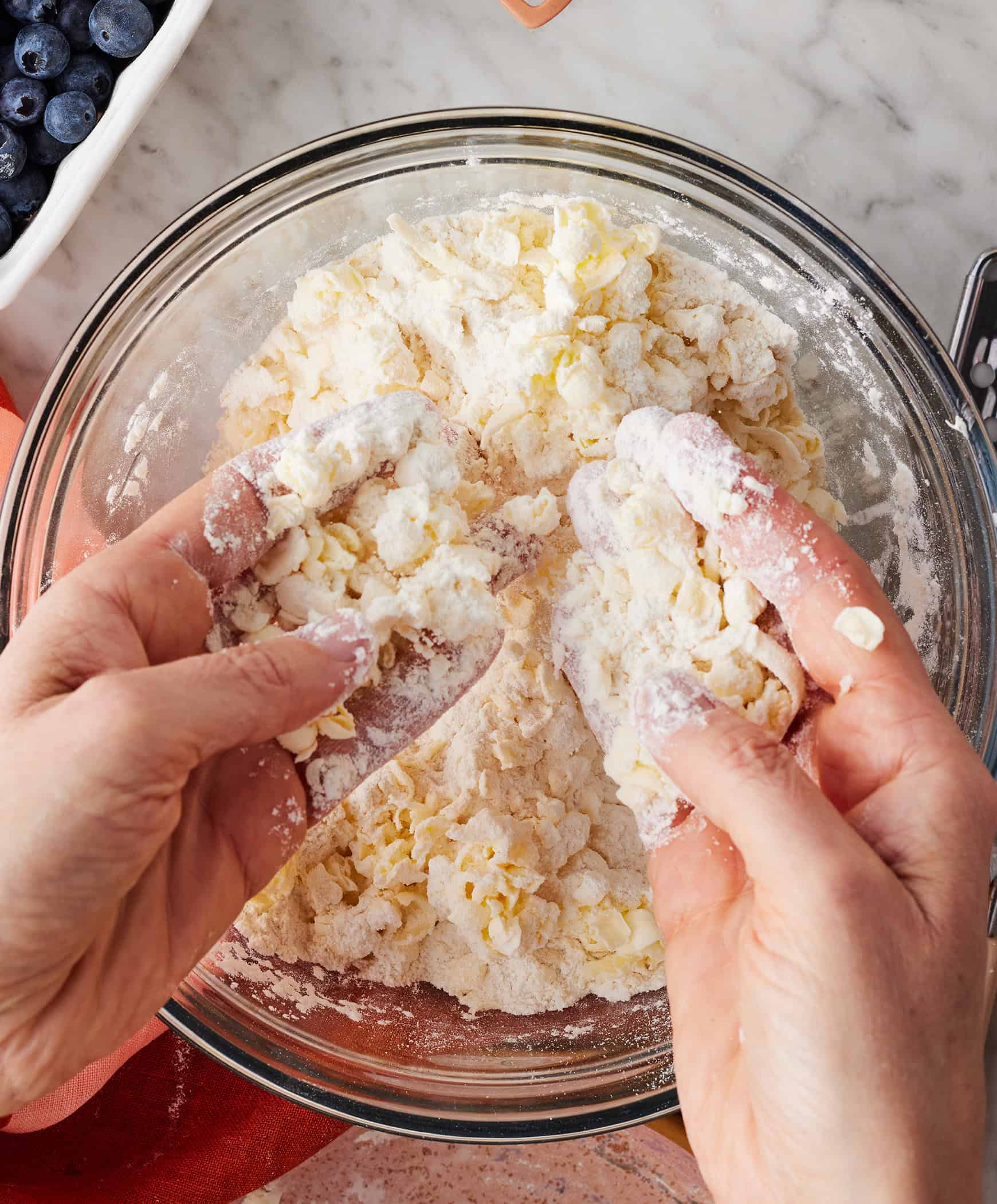
How to do scones
Making scones from scratch sounds complicated, but I promise that this recipe is really easy! This is how it works:
Start with the Scone dough. Whisk flour, sugar, baking powder and salt in a large bowl. Put the frozen butter on the large holes of a box driver and edit the butter in the flour until the mixture of a coarse meal resembles.
Do I have to use frozen, grated butter?
I recommend it! I like the frozen, grated butter method for two reasons:
- It guarantees that the butter is cold Which is important to make scaly scones! Baked goods such as scones, cookies and cake crust become scaly when small pieces of butter melt in the dough in the oven. You don’t get so scaly when the butter melts beforehand when you handle the dough.
- It doesn’t require much handling. You want to leave a few chunks of butter in the dough – the scones do it scaly! Groved pieces of butter are already quite small, so you don’t have to break up much as soon as you have added them. You can quickly and easily integrate them into the flour.
This means that if you don’t want to use this method, you don’t have to! You can also work in the flour mixture in the flour mixture with your hands or pastries. Another option is to cut the butter into the flour with a food processor.
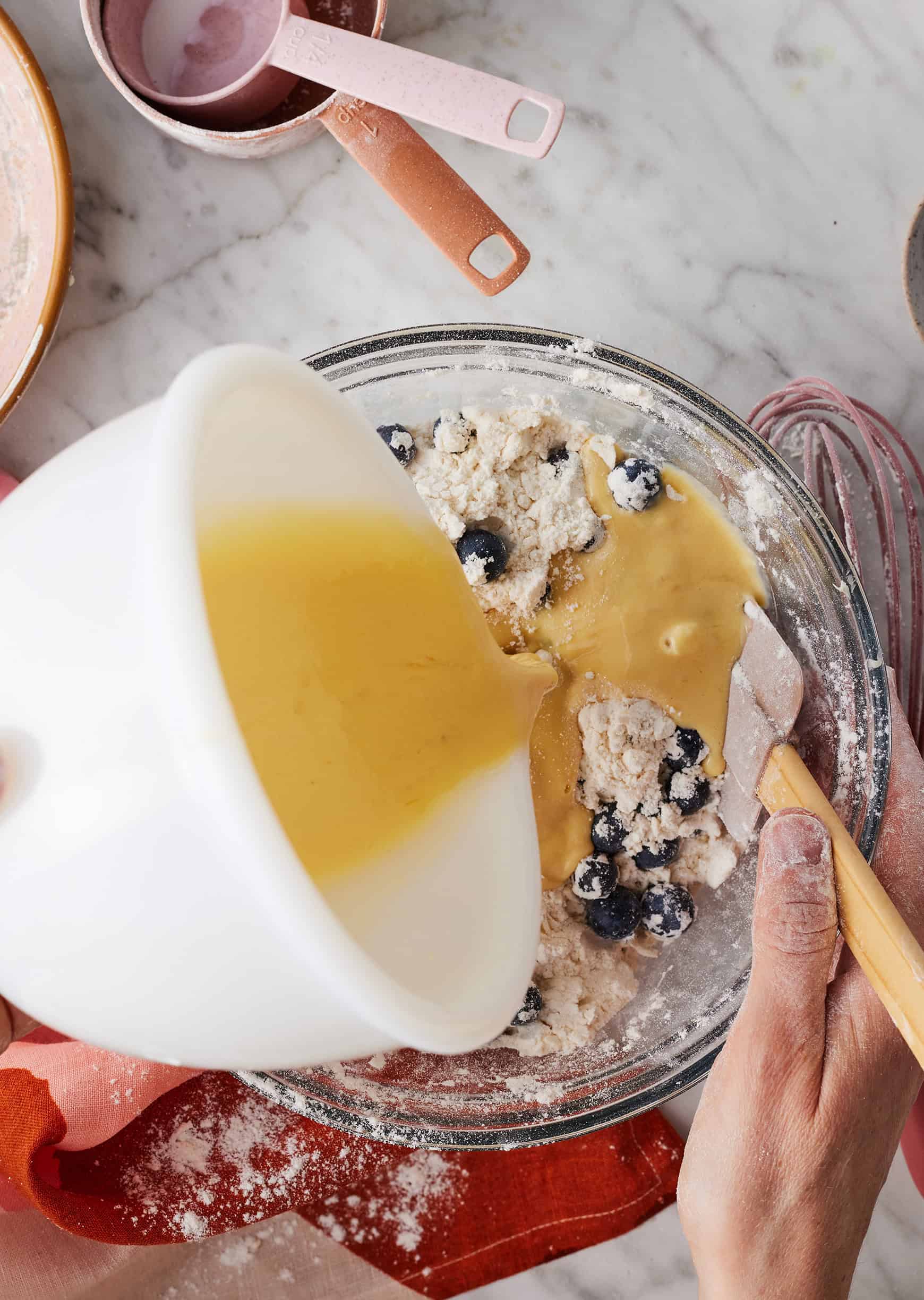
After adding the butter, Add your desired mix-ins and throw in the flour.
Whisk the remaining wet ingredients in a medium -sized bowl. Pour them into the flour mix.
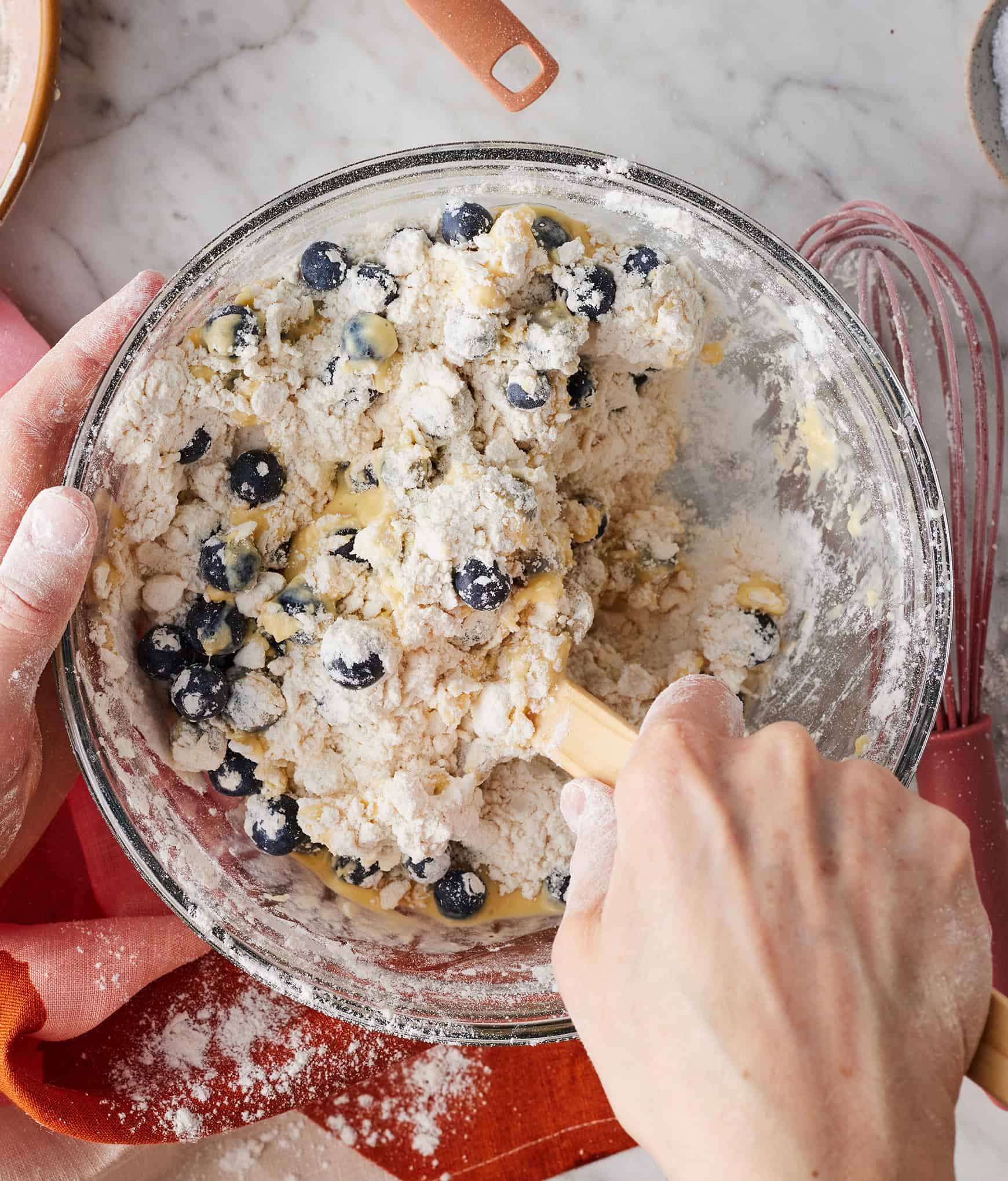
Mix with a spatula until a shaggy dough forms. Then switch to your hands and knead to integrate a remaining dry flour. Make sure not to revise the dough to avoid melting the butter.
- Tip: The mixes you use and the humidity in your kitchen can influence the texture of your scone dough. It should be soft but not sticky. Do not hesitate to work in a small flour when it feels too sticky or to add more liquid if it feels too dry.

Next they form the scones. Solve the dough on a slightly floured surface into a 1-inch thickness. Cut it into 8 same wedges.
To keep the butter cold, freeze the scones for 15 minutes While preheating the oven to 400 ° F. Then spread the tips of the scones with buttermilk and sprinkle with coarse sugar if desired.
Bake up to golden brown, 18 to 27 minutes. That’s it!
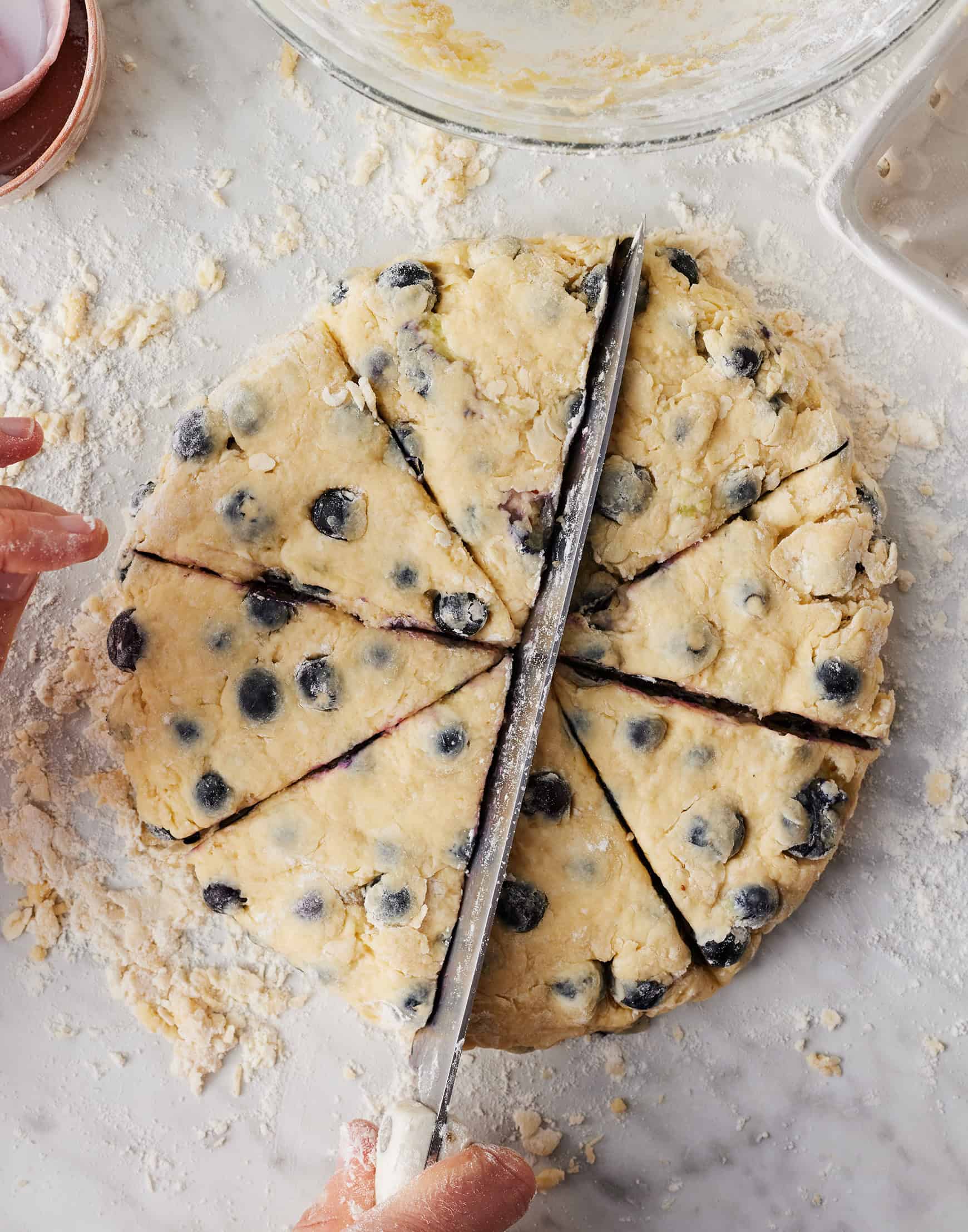
Scone taste variations
This scone recipe is a fantastic template for almost every taste of Scone! Have fun experimenting with different add-ins.
Here are some of my favorite variations:
- Lemon – A spicy turn to my Blueberry Scones! Use 1 1/2 cups of blueberries as mix-ins. Whisk 1 tablespoon of lemon peel in the moist ingredients. Drizzle the cooled scones with my simple lemon glaze.
- Chocolate chip -Use 1/2 cup of chocolate chips as mix-ins. Add a pinch of nutmeg to the dry ingredients.
- Currant or raisins -Use 1/2 cup of dried raisins or currants as mixes. Add a pinch of cinnamon to the dry ingredients.
- Cranberry Orange -Use 1/2 cup of chopped dried cranberries than mix-ins. Whisk 1 tablespoon of orange peel in the moist ingredients.
- Cheddar Kraut – The vanilla extract leave it out. Use 1/2 cup of grated cheddar cheese and 1/4 cup of chopped fresh chives as mix-ins.
Let me know what variations you try!
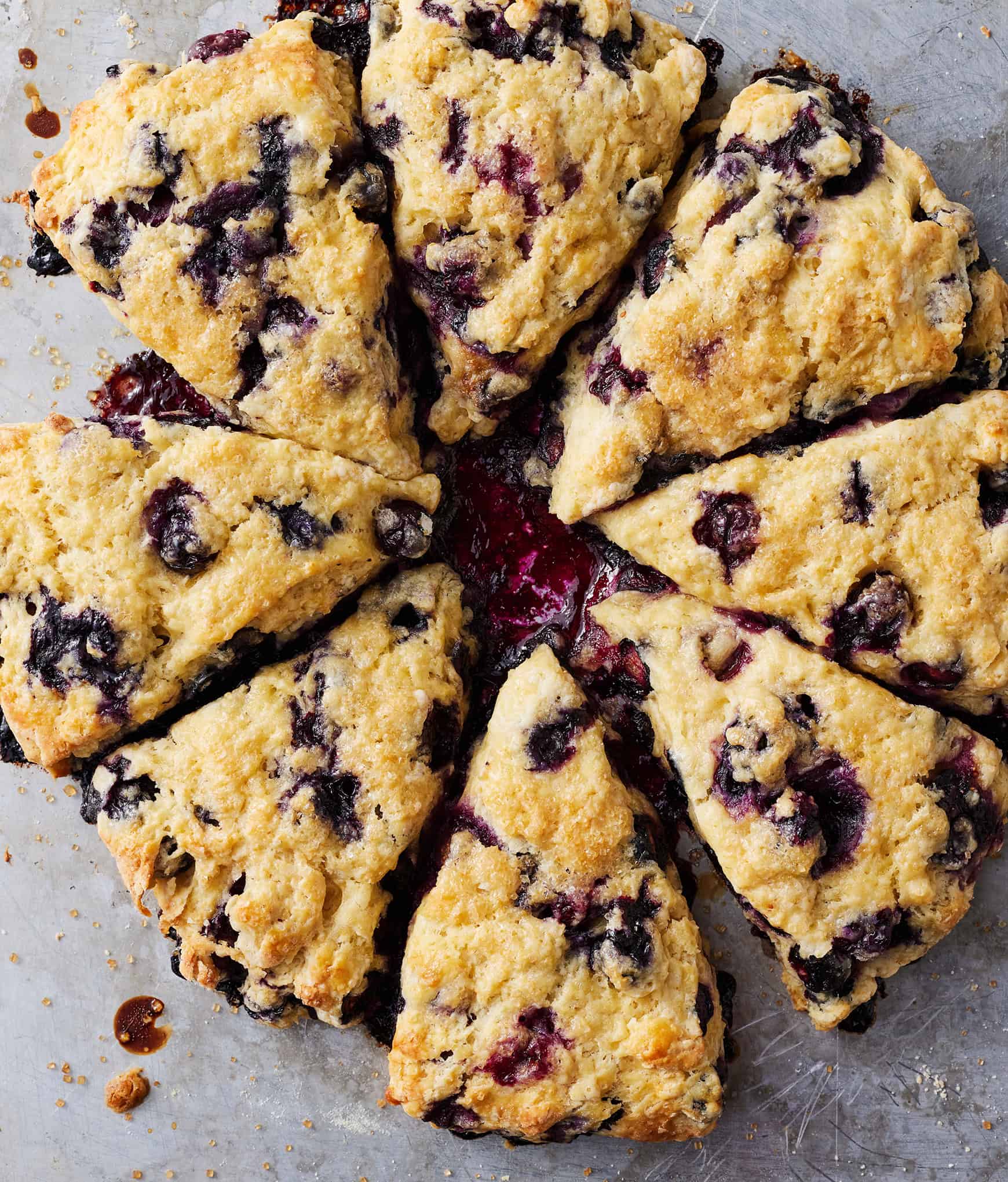
Best Scone recipe tips
- Adjust the liquid based on your mix-ins. Juicy mixes such as raspberries and diced strawberries fill moisture into the scone dough. In this case you probably need less buttermilk. First add only 1/3 cup (instead of 1/2) and gradually add more to get the dough together if necessary.
- You won’t use the same amount of every mix. A good rule of thumb is 1/2 cup for dried fruit and chocolate pieces and 1 to 1 1/2 cups for fresh fruit. And if you make hearty herbs scones, you can only use 2 tablespoons of chopped rosemary, sage or thyme!
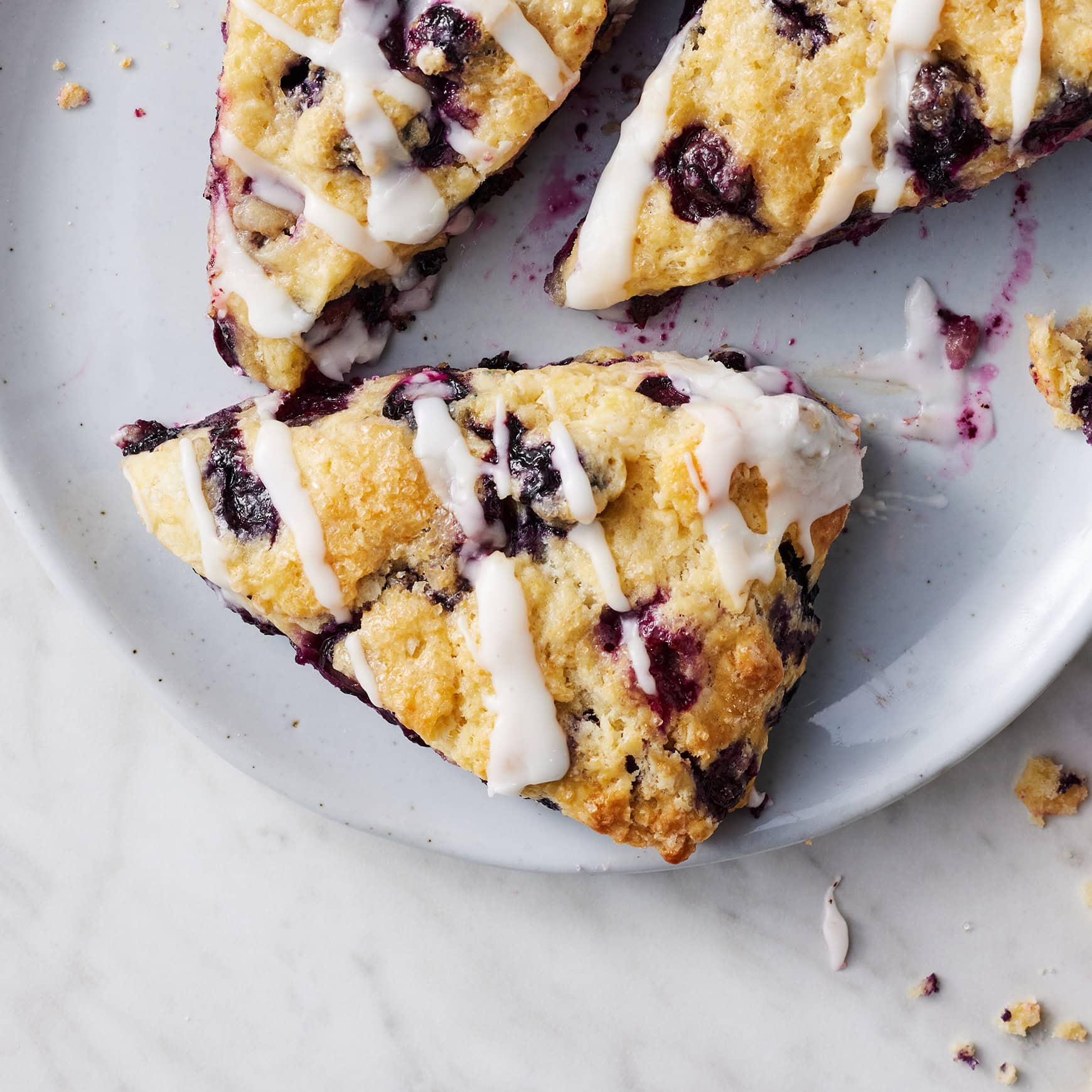
How to freeze scones
After baking, scones remain good in an airtight container for up to 2 days at room temperature.
You can also freeze them. Sealed baked scones in an airtight container or a bag and store them in the freezer for up to 3 months. Have the microwave thawed at room temperature or defrost quickly.
Another option is to freeze the scones before baking. Freeze them on a plate or a baking sheet for 1 hour. Then store them in an airtight container or bags in the freezer for up to 3 months. Bake them directly from Frozen and give them a minute or two for baking time if necessary.
With Scone dough in the freezer, you can treat yourself to a freshly baked scone at any time!

Easy Scones recipe
Served 8
We love these buttery, scaly scones for breakfast or brunch! This simple recipe works well with a variety of add-ins such as blueberries, dried fruits and chocolate chips. Find some of my favorite taste variations in the blog post above.
- 2 Cup All -purpose flourPresent spooned and paved
- ¼ cup Cane
- 2 teaspoon baking powder
- ½ teaspoon Sea salt
- 8 tablespoon unsalted butterPresent 1 stick, frozen at least 1 hour
- ½ to 1½ Cup Mix-ins*Present such as berries, dried fruits or chocolate chips, optional
- ½ cup Cold buttermilk*Present Or heavy cream and more to brush
- 1 big egg
- 1 teaspoon Vanilla extractPresent optional
- Rough sugarPresent to sprinkle
Prevent your screen from becoming dark
-
Line a large baking sheet with parchment paper.
-
Whisk flour, sugar, baking powder and salt in a large bowl.
-
Enter the frozen butter on the large holes of a box. Add into the flour mixture and throw it for coating. Use your hands to edit the butter in the flour until the mixture resembles a rough meal. Add the desired mix-ins and throw it to integrate.
-
Whisk buttermilk, egg and vanilla in a medium -sized bowl when used. Pour over the flour mixture and mix with a spatula until a shaggy dough forms. Knead with your hands to integrate remaining dry flour. The dough should feel soft, but not sticky. If it is sticky, work in a little more flour. When it is dry, drizzle a little more buttermilk. Form the dough in a ball.
-
Transfer the dough ball to a slightly floured surface and shape it in a 7 to 8-inch disc about 1 inch thick. Cut into 8 equal wedges and place on the prepared baking sheet and leave a small place around every scone.
-
Freeze the scones for 15 minutes. In the meantime, preheat the oven to 400 ° F.
-
Remove the scones from the freezer and brush them with buttermilk. Sprinkle with coarse sugar when using. Bake for 18 to 27 minutes or until golden brown.
-
Transfer to a rust to cool down.
*Note: Mix-ins such as fresh raspberries or fresh strawberries with cubes give the scone dough moisture. If you use them, add only ⅓ cups of buttermilk to the dough. If necessary, add more, 1 tablespoon at the same time until the dough comes together. Due to the additional moisture of the fruits, you probably need half a cup.






